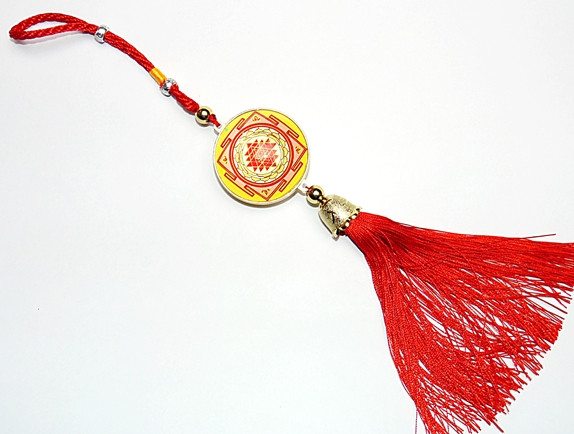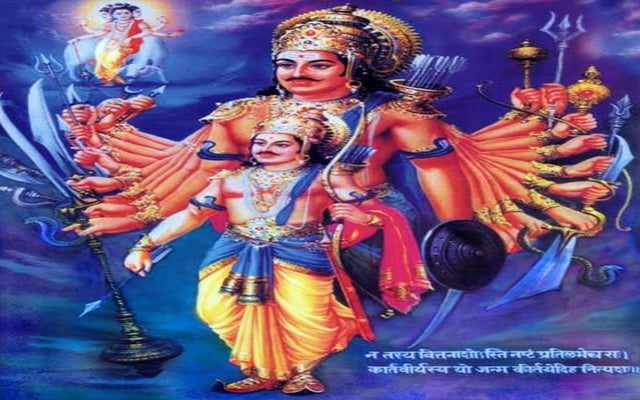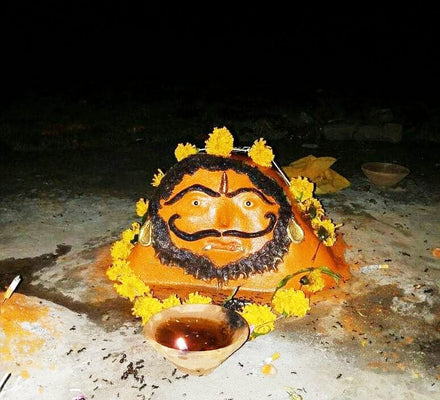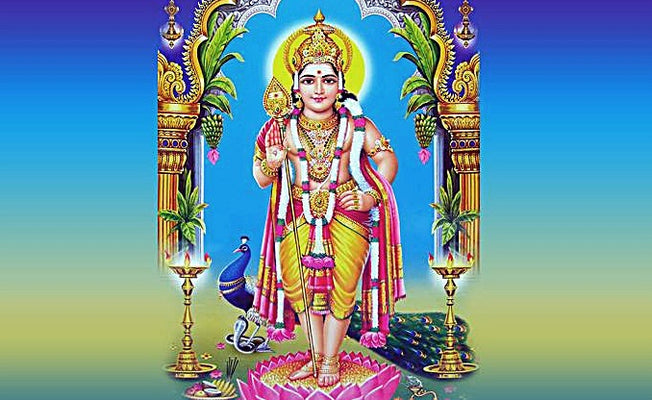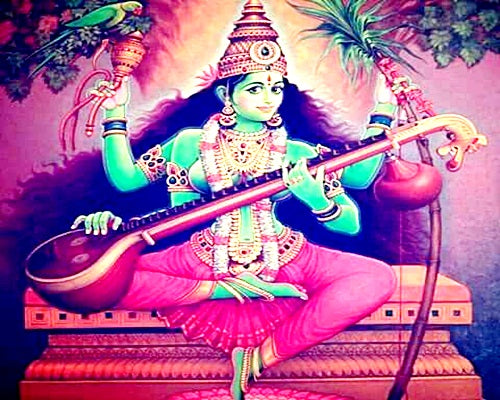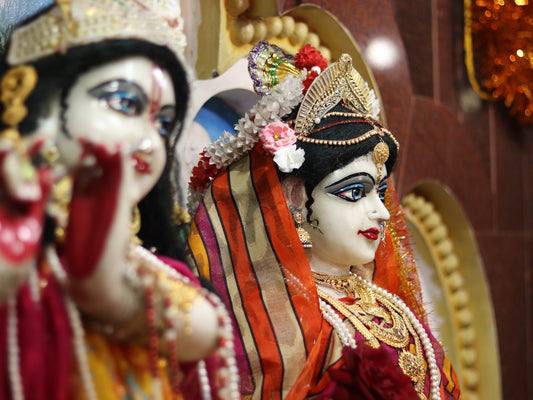Sri Khatushyam ji Temple, Rajasthan
Khatu Shyamji Temple is an important pilgrim centre of Rajasthan. However it is more popular for the annual fair that takes in the month of either February or March. The shrine is located at a distance of 48 kilometers from district of Sikar. The mela or fair takes place on the occasion of Phalgun Sudi Dashmi and lasts till Dwadashi. It lasts for three days and a large number of devotees flock the fair. Indian fairs are characterized by vitality, crowd and resplendence. Khatu Shyam ji fair is no exception in this regard. Well-decorated shops, several kinds of shows and sweet tidbits are available for the visitors. Joy rides are also part of Khatu Shyam ji fair in Rajasthan. Lord Shyam Ji head is worshipped here. The idol is made of rare stone and commands tremendous respect from visitors. Khatu Shyam Ji is the family god of lakhs of families. During the fair, 'Bhajan Sandhyas' or Bhajan programs are organized in the nights. In these programs, shyam singers sing various bhajans in the honor of Shyam baba. People enjoy, devote themselves, chant beautiful hymns of Khatu Shyam Ji and actively participate in these bhajan programs.

During Phalgun Mela, Chapan bhog or 56 types of dishes, made of besan, khoya or other ingredients, are prepared inside the temple premises and offered to Shyam Baba every morning. Later on, it is distributed as Prasad among the Shyam bhakts.
Legend
The legend begins with Mahabharata. Barbarika alias Shyam Baba alias Khatushyamji was a grandson of Bhima, second of Pandava brothers. He was the son of Ghatotkacha (Bhima`s son) and Kamkantkata Ma Morwi. Barbarika, in his childhood, was a brave warrior and mastered the warfare tactics from his mother. The epic Mahabharat battle between the Pandavas and the Kauravas was about to begin. Barbarik, true to the nature of a brave warrior (Kshatriya), wanted to be a part of this big battle. The possession of 3 divine arrows, which could finish the war in a moment, had made him invincible. Thus, the victory of the side which he would choose to support was certain. With a vow to his mother that he would support the weaker side in the battle, not the righteous one, Barbarik set out to take part in the war. On the other hand, Lord Krishna knew that the defeat of the Kauravas (adharma) was inevitable. He realized that if this brave boy joins their side, the result would then tilt in their favor, which will end the war with a doubt on correct justice. In order to prevent this, Lord Krishna, assuming the guise of a Brahmin, stopped Barbarik in his path. The Brahmin (Krishna) asked him to sacrifice his head as 'daan'(charity). He happily obliged and cut off his head (that’s the reason he is also famously known as 'Sheeshdani').But he sensed that something was amiss and humbly requested the Brahmin to disclose his true identity. Thereafter, not only did Lord Krishna show him his divine form, but also blessed him with two boons. Firstly, as per his wish, his head was positioned on top of a small hill from where he could witness the entire battle. And as for the second one, Lord Krishna told him, "You will be remembered on earth forever; and in the age of Kaliyuga (current era), your head will be worshipped by humans in my name (Shyam). Just mere pronunciation of your name from the bottom of the heart will rid people of all their sorrows and bless them with immense joy." After the battle ended, his head was buried here in Khatu. Many years later, a head was found at Khatu which was worshipped by a Brahmin for many days. Shortly, the King of Khatu had a dream inspiring him to build a temple here and place this head of the courageous Barbarik, today worshipped as Khatu Shyam Baba.
Architecture of Khatu Shyamji Temple
Originally the temple was built 975 years ago by Smt. Narmada Kanwar and her husband Shri Roop Singh Chauhan. In Samvat 1777 (1720 A.D.).Diwan Abhaisingh at the behest of the then king of Jodhpur, renovated the old temple. The temple took its present shape at this time and the idol was enshrined in the Sanctum Sanctorum. There is an open chowk before the entrance gate of the temple. This temple is very rich in its architectural galore. Marble and lime motors have been extensively used in the constructing the structure. The shutters of the Sanctum Sanctorum are covered with silver sheet beautifully. The shutter of sanctum sanctorum is very serenely covered with silver sheet, just outside the prayer hall known as the Jagmohan. The measurement of the hall is 12.3 m x 4.7 m and the wall is meticulously painted symbolizing the mythological scenes. The entrance gate and exit gate are made of marble, their brackets are also of marble and feature ornamental floral designs. There is an open space in front of the entrance gate of the temple. The Shyam Bagicha is a garden near the temple from where flowers are picked to be offered to the deity. The Samadhi of Aloo Singh, a great devotee, is located within the garden.
Bathing in the Shyam Kund
This is the holy pond near the temple from where the idol was retrieved. It is believed that a dip in this pond cures a person from ailments and brings good health. Filled with devotion, people take ritual dips in the Shyam Kund. Bathing during the annual Phalguna Mela festival is deemed especially salutary.
Nishan Yatra
Shyam Baba bhakts, from across the country, walks bare foot from Ringus to Khatu Shyam temple (around 20kms), holding a nishan (holy flag) in their hands. It is said that if you offer a Nishan at the temple, Shyam Baba will grant your wishes. Nishan is a triangular saffron colored flag, hoisted on a bamboo stick. Around millions of flags are offered at Shyam temple during Phalgun Mela. When yatra ends, these flags are hoisted at the top of the temple and worshipped later on.
Timings of Temple
From 1st October – 15th March : ( Winter Season ) Morning 5.30 a.m. to Afternoon 1.00 p.m. , Evening 5.00 p.m. to Night 9.00 p.m
From : 1st April – 15th September ( Summer Season ) Morning 4.30 a.m. to Afternoon 12.30 p.m. , Evening 4.00 p.m. to Night 10.00 p.m.
*On every Shukla Paksh Ekadshi (12th) doors of Shri Khatu Shyam Mandir remains open for 24 hrs. On Every Kartik Sudi Ekadshi, Shyamji birthday is being celebrated with great hustle & bustle and from Phalgun Sudi Dashmi till end of festival doors of Shri Khatu ShyamJi remains open all the time.
Places of Interest
GouriShankar Temple - Shiva temple situated near Shyamji’s temple. It is a legend that the Mughal emperor Aurangzeb’s soldiers wanted to destroy this temple, and attacked the Shiva Linga with a spear. Fountains of blood appeared from the Shiva Linga, and the soldiers ran away, terrified. One can still see the mark of the spear on the Linga.
Shyam Bagicha - A blessed garden near the temple from where the flowers are picked to be offered to the deity. The great devotee Lt. Aloo Singhji’s Samadhi is also situated in the premises.
Ganeshwar Village - Ganeshwar village is situated close to the town of Neem ka Thana in Sikar. The hot sulphur springs are its prime attraction and it is believed that taking a dip in the spring water cures skin ailments. The ruins belonging to the 4,000 years old civilisation were found in the excavation done around Ganeshwar. Baleshwar city, nearby Ganeshwar, is popular for an ancient Shiva temple.
Jeenmata Temple - Jeenmata village has an ancient temple devoted to Goddess Jeen Mata. It is believed to have been constructed around 1,000 years ago in the architectural styles of Rajput clans, namely Pratihar and Chauhan. The temple has twenty four pillars that are carved with figures. The idol of Goddess Jeen Mata enshrined in the temple has eight arms. An annual fair is held on the occasion of Navratri in the months of Chaitra and Ashwin.
Harshnath Temple - The Harshnath temple, belonging to the 10th century, is located on the Aravalli Hills near Sikar. The remnants of the ancient Shiva temple can be seen at the site. Another Shiva temple, constructed in the 18th century by Shiva Singh of Sikar, is situated near the Harshnath temple.
Getting there and around
By Air - The nearest airport is located at Jaipur (115km). One can take a Prepaid taxi from airport itself to reach KhatuShyam ji temple.
By Rail - Nearest railway station is at Sikar (50km). Reengus junction is another station near by.
By Road - Khatushyam ji is located at a distance of 17kms from Rengus and well connected to Sikar and Jaipur. One can reach the place easily by hiring a taxi or using bus. It will not take you more than 3 hours to reach the temple from Jaipur.
Accommodation
There are 4 main hotels in khatushyam ji .These are Hotel Shyam, Hotel Natraj (Phone - 01576-230033, 512548, 09828607970 ), Hotel Kavita and Mayuri Hotel (Phone - 09829059012, 09413348980). There are a large number of Dharamshalas and Vishram Grihas fully equipped with boarding and lodging facilities. These are well maintained by various organizations. Some of them even have deluxe rooms with attached bathrooms, geysers, air-coolers and air-conditioners. The boarding is generally free of cost.
Contacts
Khatushyam ji temple ,P.O. - Khatu Shyamji, District - Sikar , State- Rajasthan (India)
Phone : 01576-230182 , 230482



